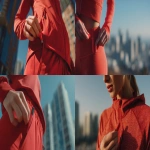Explore the Best AI Image Gallery

Where Art Meets Tech: Exploring the Transformative Power of Wearable Solutions in the Creative Industry
The intersection of art and technology has always been a fertile ground for innovation, and wearable technology is rapidly emerging as a powerful force shaping the creative landscape. From augmented reality (AR) glasses that overlay digital elements onto the physical world to haptic suits that translate sound into tactile sensations, these devices are empowering artists, designers, and creators to explore new mediums, express themselves in innovative ways, and redefine the boundaries of artistic experience.
Unlocking Creative Potential: Diverse Applications of Wearable Tech
Wearable technology offers a vast array of possibilities for creative expression across various disciplines:
- Visual Arts: AR glasses and head-mounted displays (HMDs) allow artists to create immersive installations, overlay digital paintings onto real-world environments, or design interactive sculptures that respond to viewer movement.
- Performing Arts: Wearable sensors can track dancers movements in real time, translating them into dynamic lighting effects, sound patterns, or even virtual projections, creating a mesmerizing fusion of physical and digital performance.
- Music Production: Smartwatches and fitness trackers equipped with motion sensors can be used as intuitive musical instruments, allowing composers to create music based on their gestures, body movements, or even heart rate variations.
- Fashion Design: Wearable technology is transforming fashion from static garments into interactive experiences. Clothes embedded with LEDs, responsive fabrics, or haptic feedback can change color, texture, or shape based on the wearers environment or emotions.
Navigating Ethical Considerations
As with any emerging technology, wearable solutions in the creative industry raise important ethical considerations:
- Privacy and Data Security: Wearables collect vast amounts of personal data about users movements, behaviors, and even physiological states. It is crucial to ensure that this data is handled responsibly, with transparent consent mechanisms and robust security measures in place.
- Accessibility and Inclusivity: The benefits of wearable technology should be accessible to all individuals, regardless of their physical abilities or socioeconomic background. Designers must strive for inclusivity in the development and deployment of these solutions.
- Authenticity and Ownership: The blurring lines between human creativity and technological assistance raise questions about the authorship and ownership of creative works generated using wearables. Clear guidelines and legal frameworks are needed to address these complexities.
Future Trends: Shaping the Creative Landscape
The future of wearable technology in the creative industry holds immense potential:
- Enhanced Collaboration: Wearables will enable artists from different disciplines to collaborate seamlessly, regardless of their physical location. Real-time data sharing and immersive virtual environments will foster new forms of co-creation.
- Personalized Creative Experiences: Wearables will empower individuals to create and consume art in highly personalized ways. Imagine interactive narratives that adapt to your emotions or musical compositions that respond to your movements.
- Integration with AI: Artificial intelligence will play an increasingly significant role in augmenting creative processes. Wearables can leverage AI algorithms to generate novel ideas, assist in artistic production, and provide real-time feedback to creators.
As wearable technology continues to evolve, its impact on the creative industry will only become more profound. By embracing innovation while navigating ethical considerations thoughtfully, we can unlock the transformative power of these devices to shape a future where art and technology converge in exciting and unexpected ways.

](https://images.ai-img.art/thumbnails/150/1202074d0d60b08b64d0f91f36468608aaac200a02b721cc8e6d8ec8a908432c.webp)
](https://images.ai-img.art/thumbnails/150/60973df1d727dbbf8e6922b7e4836814ab6012106eb9dcfe99aea7aec15f3710.webp)

](https://images.ai-img.art/thumbnails/150/655229c40961cb7ff5abd4b4190e02c94ea1a961106e7547a562649c945268be.webp)




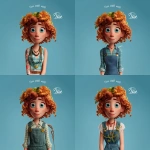

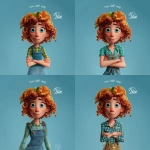


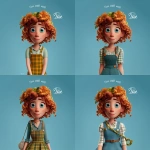



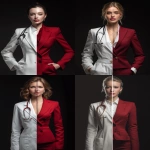
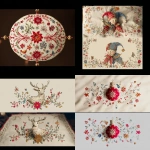
](https://images.ai-img.art/thumbnails/150/184b4b030e30be0a6d51b544226cb4cf2271977814d935d3aaa2b7529355b3b7.webp)


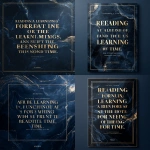
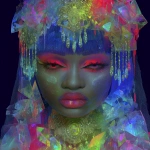
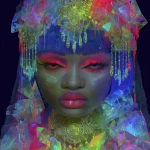






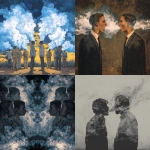

](https://images.ai-img.art/thumbnails/150/e6a179db327f0374ec327d0fdab48ac1f2dc47123eed103b0a41ed346280d07d.webp)




](https://images.ai-img.art/thumbnails/150/6c909fd6d38caac6572b592dd97831deb7d6562bba142798574677582676dfc1.webp)
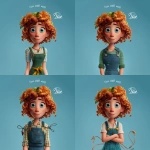






](https://images.ai-img.art/thumbnails/150/26c16e4f635deee86633de398088ca98d9bb748d6e7601436b07e882fab236cb.webp)
